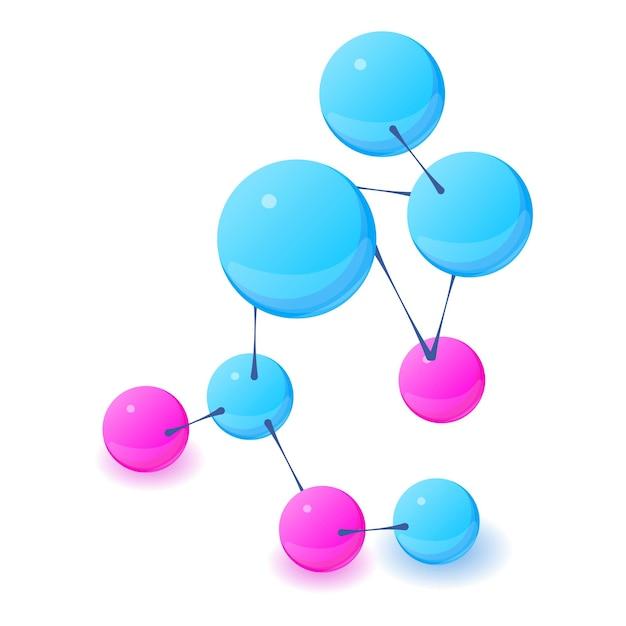Sodium hydroxide (NaOH) is a compound that has intrigued many chemistry enthusiasts. In this blog post, we’ll dive deep into the fascinating world of chemical bonding to explore whether NaOH contains both ionic and covalent bonds.
Understanding the nature of bonds in compounds is essential for grasping their properties and behavior. So, if you’ve ever wondered about the bonding involved in NaOH or wanted to know more about ionic and covalent compounds in general, you’re in the right place! We’ll unravel the mystery surrounding NaOH’s bonding and examine other compounds that possess this intriguing duality of bonds.
Let’s embark on this chemical journey together and discover the secrets hidden within NaOH’s atomic structure!
Does NaOH Contain Both Ionic and Covalent Bonds
Have you ever wondered about the nature of the chemical bonds in NaOH? Brace yourself for a wild ride as we dive into the fascinating world of chemistry and explore whether NaOH contains both ionic and covalent bonds. Get ready for some electrifying information!
Ionic and Covalent Bonds—A Clash of Chemistry Titans
Let’s start by unraveling the mysteries behind ionic and covalent bonds. Ionic bonds occur when atoms transfer electrons to achieve a stable electric charge, resulting in the formation of charged particles called ions. On the other hand, covalent bonds involve atoms sharing electrons, creating a delicate dance of electron interactions.
The Incredible NaOH
Now, let’s turn our attention to the star of the show: NaOH, also known as sodium hydroxide. This compound has a rich history and a variety of uses. From being a key ingredient in soap-making to playing a crucial role in various chemical processes, NaOH keeps scientists and chemists on their toes.
The Truth Unveiled
So, does NaOH contain both ionic and covalent bonds? The answer might come as a shock—pun intended! NaOH primarily forms ionic bonds. Sodium (Na) has a strong tendency to lose an electron and become a positively charged ion. Conversely, hydroxide (OH) gains an electron and becomes a negatively charged ion. This electrostatic attraction between the positively charged sodium ion and the negatively charged hydroxide ion holds the compound together.
The Exceptional Covalent Twist
While NaOH mainly consists of ionic bonds, there is a subtle covalent element at play. The oxygen atom in the hydroxide ion shares electrons with the hydrogen atom, forming a covalent bond within the hydroxide ion. This tiny covalent twist adds an extra layer of complexity to NaOH’s bonding structure.
Bonds in Perspective
Understanding the bonding in NaOH helps us appreciate the fundamental principles of chemistry. Ionic and covalent bonds are not mutually exclusive; rather, they coexist in various compounds, each playing a unique role in determining the compound’s properties.
NaOH is a fascinating compound that showcases the intricacies of chemical bonding. While it primarily consists of ionic bonds, a touch of covalent bonding within the hydroxide ion adds an intriguing twist. Next time you encounter NaOH, remember the hidden dance between ions and shared electrons that forms this compound. Chemistry truly knows how to keep us on our toes!
So there you have it—NaOH: a compound that electrifies the world of chemistry with its captivating mixture of ionic and covalent bonds. Stay curious, keep exploring, and let the wonders of chemistry continue to amaze you!
FAQ: Does NaOH Contain Both Ionic and Covalent Bonds
How can you determine if a compound contains only covalent bonds
To determine if a compound contains only covalent bonds, you need to examine its molecular formula and structure. Look for elements that are nonmetals, as they are more likely to form covalent bonds. Additionally, you can analyze the electronegativity of the elements involved. If their electronegativity difference is low (less than 1.7), it suggests covalent bonding.
Why is sodium hydroxide ionic
Sodium hydroxide (NaOH) is an ionic compound because it is composed of a metal (sodium) and a nonmetal (oxygen and hydrogen). In ionic compounds, the metal donates electrons to the nonmetal, resulting in the formation of positively charged metal ions and negatively charged nonmetal ions. In the case of NaOH, sodium donates an electron to oxygen, creating an ionic bond.
What type of bond is present in NaOH
In NaOH, an ionic bond is present. The sodium atom donates an electron to the oxygen atom, resulting in the formation of an ionic bond between the positively charged sodium ion (Na+) and the negatively charged hydroxide ion (OH-).
Is NaOH an ionic or covalent compound
NaOH is an ionic compound. It consists of positively charged sodium ions (Na+) and negatively charged hydroxide ions (OH-), held together by ionic bonds.
Which compound has both ionic and covalent bonds
Compounds that contain both ionic and covalent bonds are called polar covalent compounds. These compounds have elements with partial charges, resulting from the sharing of electrons between atoms with different electronegativities. An example of such a compound is hydrochloric acid (HCl), where the hydrogen and chlorine atoms share electrons in a covalent bond, but the chlorine atom pulls the shared electrons closer, causing a partial negative charge on the chlorine atom and a partial positive charge on the hydrogen atom.
Is H2SO4 a covalent or ionic bond
H2SO4, also known as sulfuric acid, is a covalent compound. It consists of covalent bonds between the hydrogen atoms and the sulfur atom, as well as an additional covalent bond between the sulfur and oxygen atoms. The compound does contain ionic bonds when it dissociates in water to form sulfate ions (SO42-), but in its pure form, it is a covalent compound.
Is NaOH a strong electrolyte
Yes, NaOH is a strong electrolyte. When dissolved in water, it completely dissociates into sodium ions (Na+) and hydroxide ions (OH-), which are capable of conducting electricity.
Does CaCl2 contain both ionic and covalent bonds
CaCl2, also known as calcium chloride, contains ionic bonds. It consists of calcium ions (Ca2+) and chloride ions (Cl-), which are held together by ionic attractions. There are no covalent bonds involved in CaCl2.
Is KCl ionic or covalent
KCl, or potassium chloride, is an ionic compound. It consists of potassium ions (K+) and chloride ions (Cl-), which are held together by ionic bonds.
Does sodium hydroxide have all three types of bonds
No, sodium hydroxide (NaOH) does not have all three types of chemical bonds. It only has ionic bonds between the sodium ion (Na+) and the hydroxide ion (OH-). The other two types of chemical bonds, covalent and metallic, are not present in NaOH.
How can you determine if a compound has both ionic and covalent bonds
To determine if a compound has both ionic and covalent bonds, you can analyze its molecular formula and structure. If the compound consists of both metals and nonmetals, it suggests the presence of ionic bonds. Additionally, if there are elements with similar electronegativity, it suggests the presence of covalent bonds. Compounds that contain both types of bonds are known as polar covalent compounds.
What is more basic, NH3 or NaOH
NaOH (sodium hydroxide) is more basic than NH3 (ammonia). NaOH is a strong base, while NH3 is a weak base. The hydroxide ion (OH-) in NaOH readily accepts a proton (H+), making it a strong base. NH3, on the other hand, has a weaker tendency to accept a proton.
What are three weak acids
Three examples of weak acids are acetic acid (CH3COOH), carbonic acid (H2CO3), and formic acid (HCOOH). Weak acids only partially dissociate in water and have a lower concentration of H+ ions.
Is NaOH a covalent bond
NaOH itself is not a covalent bond. NaOH is an ionic compound composed of sodium ions (Na+) and hydroxide ions (OH-), held together by ionic bonds.
Is NaOH an Electrovalent compound
Yes, NaOH is an electrovalent compound. Electrovalent compounds are another term for ionic compounds, which are composed of ions held together by electrostatic attractions.
How can you determine if a compound has both ionic and covalent bonds
To determine if a compound has both ionic and covalent bonds, you need to consider the elements involved and their electronegativities. If the compound consists of both metals and nonmetals, it suggests the presence of ionic bonds. If the elements have similar electronegativities, it suggests the presence of covalent bonds.
Does NH4Cl contain both ionic and covalent bonds
NH4Cl, or ammonium chloride, contains both ionic and covalent bonds. The ammonium ion (NH4+) has covalent bonds between the nitrogen and hydrogen atoms, while the chloride ion (Cl-) forms an ionic bond with the ammonium ion.
Is hydroxide a covalent bond
Hydroxide itself is not a covalent bond. Hydroxide (OH-) is an ion composed of one oxygen atom and one hydrogen atom, held together by a covalent bond. It can form ionic bonds with other ions or compounds.
Is NaOH a strong base
Yes, NaOH is a strong base. It completely dissociates in water, releasing hydroxide ions (OH-) that contribute to high alkalinity and pH levels.
What is the weakest base in chemistry
Ammonia (NH3) is considered one of the weakest bases in chemistry. While it can accept a proton to form the ammonium ion (NH4+), it has a lower affinity for protons compared to other bases such as hydroxide ions (OH-) or strong bases like sodium hydroxide (NaOH).
Does NaOH have covalent bonds
No, NaOH does not have covalent bonds. It only has ionic bonds between the sodium ion (Na+) and the hydroxide ion (OH-).
Which compounds contain both ionic and covalent bonding: I) CaCO3, II) NaCl, III) NaOH
Among the given compounds, only CaCO3 (calcium carbonate) contains both ionic and covalent bonding. The calcium ion (Ca2+) and carbonate ion (CO32-) are held together by ionic bonds, while within the carbonate ion, there are covalent bonds between the carbon and oxygen atoms. NaCl (sodium chloride) and NaOH (sodium hydroxide) consist of ionic bonds only.
Is HC2H3O2 covalent or ionic
HC2H3O2, also known as acetic acid, is a covalent compound. It consists of covalent bonds between the carbon, hydrogen, and oxygen atoms. Acetic acid is a weak acid that partially dissociates in water.
Is acetic acid an ionic compound
No, acetic acid (HC2H3O2) is not an ionic compound. It is a covalent compound composed of carbon, hydrogen, and oxygen atoms bonded together by covalent bonds. Acetic acid is a weak acid and is commonly found in vinegar.

